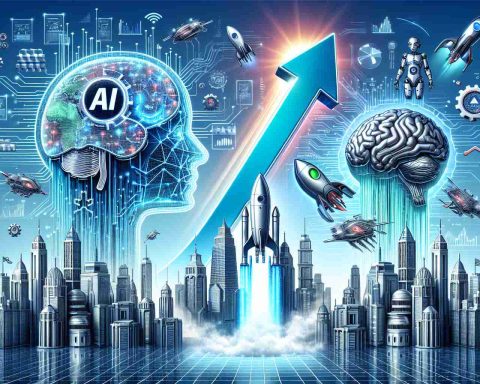In the rapidly evolving digital landscape, a new trend is surfacing: the creation of interactive literary characters. As technology advances, traditional fictional characters are no longer confined to the pages of books or the frames of movies. Instead, they are experiencing a sort of digital resurrection, stepping into the virtual world where they can engage with audiences in unprecedented ways.
Recent innovations in AI and machine learning have allowed developers to create intricate algorithms capable of simulating the personalities and behaviors of beloved literary figures. With these technologies, readers can interact with characters like never before, engaging in conversations and even altering narratives based on personal choices. Imagine having a real-time chat with Sherlock Holmes or embarking on a quest led by Hermione Granger as your guide.
This new dimension of storytelling does not merely enhance the reader’s experience but potentially transforms it. By allowing characters to exist in a dynamic, interactive form, users can develop a deeper connection with the narratives, influencing plot lines and exploring alternate plot possibilities. This direct interaction is making stories inherently more immersive and participatory than ever before.
While this innovation raises questions about authorship and the purity of original literary works, proponents argue that it represents a new frontier in storytelling. As artificial intelligence continues to develop, the boundaries of literature will continue to stretch, ushering in an era where readers are not just observers, but active participants in fictional worlds.
Step Into Fiction: How Interactive Literary Characters Are Revolutionizing Storytelling
In today’s digital age, storytelling is undergoing a revolutionary transformation with the advent of interactive literary characters. These cutting-edge innovations are not just augmenting the storytelling experience but are redefining the very nature of narratives.
Trends and Innovations
One of the most exciting trends in this domain is the use of artificial intelligence to bring beloved literary characters to life in the digital realm. The integration of AI with classic storytelling techniques is opening up new avenues for both creators and audiences. Developers are utilizing sophisticated algorithms that allow characters to display a level of intelligence and personality akin to human interaction. These interactive characters can now hold meaningful conversations, provide personalized narratives, and even react dynamically based on user input.
Key Features and Use Cases
This innovative approach offers an array of features, such as real-time interaction, decision-driven plot developments, and an immersive experience that bridges the gap between reader and character. Users can enjoy a personalized reading journey where they make choices that influence the direction of the story. An example might include solving a mystery with the help of Sherlock Holmes or enhancing magical skills under the mentorship of Hermione Granger.
Pros and Cons
Pros:
– Enhanced engagement through participatory experiences.
– Personalized narratives, catering to individual preferences.
– Increased exploration of alternate storylines, adding layers to traditional tales.
Cons:
– Challenges associated with authorship and preserving the original narrative.
– Potential overreliance on technology may diminish the role of traditional storytelling.
Market Analysis
The market for interactive storytelling is burgeoning, as evidenced by increased investments in AI and digital literature platforms. There is a growing demand for content that offers a blend of entertainment and engagement, pointing to a future where interactive narratives could become a standard format for literary consumption.
Sustainability and Predictions
In terms of sustainability, digital storytelling platforms are minimizing the carbon footprint associated with physical book production. As for predictions, the popularity of interactive characters is expected to rise, especially with younger, tech-savvy audiences who are eager for novel experiences. This trend also paves the way for potential collaborations between technology companies and literary estates to create officially sanctioned interactive adaptations.
Future Insights
Looking ahead, as AI technology continues to advance, interactive literary characters could become a cornerstone in education and entertainment. They may serve as educational tools, providing interactive learning experiences in a narrative format that captivates students and improves engagement.
For more insights on the intersection of technology and storytelling, visit Wired to explore the latest innovations and their implications in the digital world.










